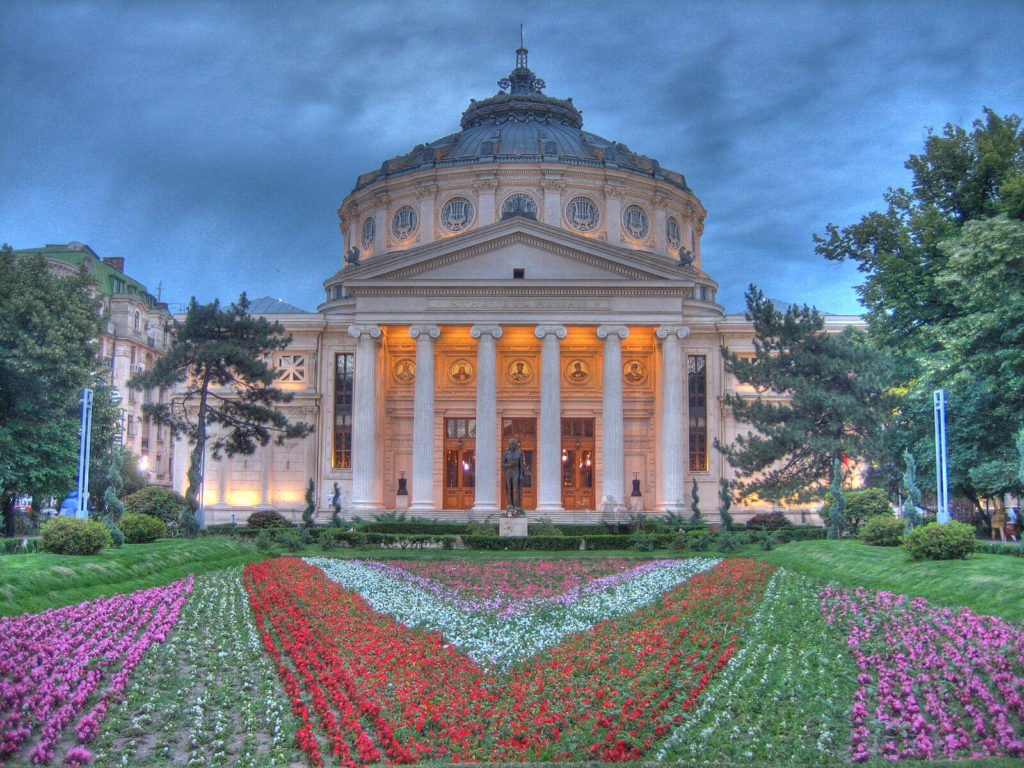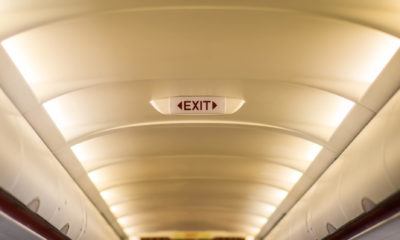Business
What to see and do when you’re in Bucharest, Romania
If you’re looking for a new country to explore, consider making a trip to the culture-rich nation of Bucharest.

Bucharest is a city full of surprises. Did you know Bucharest was the first city to have street lights and introduced petrol-powered street lights to the world as well?
It is a bustling city, with an air about it as if something big is about to happen. Aside from being the capital of Romania, Bucharest is also the 6th largest capital city in Europe. Interest in Bucharest is growing, with an increase of over 60% in searches about Bucharest on Trip Advisor.
Interestingly, wine production in Romania is also growing quickly. Currently, it is the 6th largest producer of wine in Europe. It follows some huge global producers: Spain, Italy, France, Germany, and Portugal. This steady climb is one of the best largest producers of wine has also attracted connoisseurs and enthusiasts to the country.
Food in Bucharest is not be left behind as well. There are over 4000 restaurants in the city and that number is growing all the time. New restaurant growth between 2010-2019 is 5% per annum in Bucharest. You can find food and cuisines from around the world, making Bucharest a must-visit city for foodies.
Heritage and people
When talking about its people, one of the most famous Romanians is Nadia Comaneci, the first gymnast to receive a perfect 10 in the Olympics (Montreal, 1976). Then there’s the famous vampire. Yes, Romania is the home of Dracula. The fictional character is believed to be inspired by the Romanian ruler, Vlad the Impaler.
In general, though, many people associate Romania with gypsies, whose correct name is Roma. (Gypsy is a pejorative term.) While Romania and Romany sound similar, this minority ethnic group is not originally from Romania. They are from India.
Today, many people have Roma heritage, but like many places around the world, this minority group does not enjoy the same level of social, economic and health outcomes as the majority population in Romania.
For a look at the history of the Roma population and how they live today in Bucharest and Romania, the Roma Heritage tour provides some insights. The tour covers the history of the modern Roma movement, looks at traditional Roma crafts and skills, visits a local Roma neighborhood, called Ferentari located south of the city center, and ends at the Roma Heritage Museum, Romano ButiQ.
The Roma Museum is located on the outskirts of the largest Roma community in Bucharest—Giulesti Sarbi. If you don’t have time for the full tour, visit Mesteshukar ButiQ, (MBQ) a shop in Bucharest which features crafts and clothing from the local Roma community.
Romanian architecture
One of the best things to do in Bucharest is checking out the architecture. Romanian architecture is a wonderful mix of styles and influences from various eras. For instance, the largest building in Europe—2nd only to the US Pentagon in size—is the Palace of Parliament in Bucharest, built in 1980.
The colossal structure is a combination of various influences— from classical, communist, neoclassical, North Korean sources, to name a few. With 700 architects that worked on it, the hotspot of architectural styles that made it as eclectic and unidentifiable is not a surprise Now, the Palace of Parliament is the “most expensive administrative building in the world,” with its worth estimated to be around €3 billion or $3.4 billion. You can visit it on a guided tour and you will need your passport for ID.
French, neoclassical influence
Once known as Little Paris, Bucharest has embraced the French influence. French was once widely spoken in the ballrooms of Bucharest. The wealthy sent their children to Paris to study. It is no surprise then that the French aesthetic has manifested itself in various aspects of Bucharest, especially in its architecture. The streets of Bucharest are modeled after Paris, and Bucharest has many wide, tree-lined boulevards. French replicas include the Arc de Triomphe and the Natural History Museum, a replica of Palais du Poste in Paris.

The Romanian Athenaeum is just one of the many beautiful architectural wonders Bucharest has to offer. (Photo by Simon Laird via Wikimedia Commons. CC BY-SA 2.5.)
A fabulous building showing the influence of French architecture is the Romanian Athenaeum. Built in 1886-1888, the building was originally funded by wealthy individuals. When funds ran short, money raised from the public completed the Athenaeum.
Today it is a concert and theater venue. If not in use, you can enter the building. Inside the round theater is a large and spectacular mural—which survived the Communist era—depicting the history of Romania.
New Romanian style
As some point, Romanian and Bucharesti officials decided to develop their own architectural style rather than just copy Paris. So, the New Romanian style was born.
Many houses and moderate-sized apartment buildings were built in this style. It is distinctive for the roof line—rather than domes from French architecture, it features an alpine-looking roof. This particular feature was adopted from the Romanian countryside. Strolling through some of the older neighborhoods, including the Armenian neighborhood, provides good opportunities to see examples of the New Romanian style.
The communist effect
The Memorial of Rebirth marks the site of the Romanian Revolution in 1989. This is the time communism started to fall across Europe. Romania’s Revolution started in Bucharest. One can take a “communist tour” to learn more about the history of communism in Bucharest and Romania.
There are also a lot of buildings around Bucharest from the Communist era. Despite being known for its lack forward-thinking in good building design, communist architecture is still interesting for the pieces of history they hold. You will still see heavily industrialized buildings to high-density blocks from the bygone communist epoch, such as the Casa Presei Libere or the House of the Free Press.
Modern designs
However, there are also a number of renovations underway. These projects are restoring many of the pre-communist, classic old buildings and turning them into offices, apartments, shops, bars, and restaurants. Refurbishment of some of the old buildings is introducing modern design to them as well.
Strolling down Calea Victoriei, you will find many of Bucharest’s public buildings, international hotels and designer shopping can be found on this wide boulevard. If you wander through Old Town, you’ll find it as the up-and-coming area of Bucharest. Many of the pedestrian-only streets are lined with great shops, bars, restaurants, and cafes.
Spending one evening in the Old Town is one of the best things to do in Bucharest. Meanwhile, if you need a good place to rest and recharge, don’t miss Cărturești Carusel. A bookstore, and the café inside, it is one of Bucharest’s most photographed spots!

Take a leisurely stroll through Old Town where a lot of shops, bars, and restaurant are located. (Photo by Stefan Jurca via Wikimedia Commons. CC BY-SA 2.0.)
Best places to relax
Bucharest has a number of large parks and open spaces. You can reach the parks via the bus or metro (subway) and there is also a system of trams that run around Bucharest.
Some places for a breath of fresh air in Bucharest:
- Cișmigiu Gardens — near the center of Bucharest
- Tineretului Park — a large park in Southern Bucharest
- Mogosoaia Palace — the summer palace, just outside of Bucharest. It is a popular picnic spot with the locals on the weekend and you can see why. The Palace borders a large lake and has extensive gardens.
In early May, the irises in the gardens are a stunning view! Inside the palace, most of the original furnishings were removed during the Communist era. Locals have donated pieces from the time when the Palace was used so you can observe furniture and fittings of the day.
There are many other things to do in Bucharest. Now is an exciting time to visit, before the rest of the world finds out about Bucharest and all it must offer.
—
DISCLAIMER: This article expresses my own ideas and opinions. Any information I have shared are from sources that I believe to be reliable and accurate. I did not receive any financial compensation in writing this post, nor do I own any shares in any company I’ve mentioned. I encourage any reader to do their own diligent research first before making any investment decisions.

-

 Crowdfunding1 week ago
Crowdfunding1 week agoPMG Empowers Italian SMEs with Performance Marketing and Investor-Friendly Crowdfunding
-

 Markets5 days ago
Markets5 days agoMarkets Wobble After Highs as Tariffs Rise and Commodities Soar
-

 Markets2 weeks ago
Markets2 weeks agoThe Big Beautiful Bill: Market Highs Mask Debt and Divergence
-

 Africa2 days ago
Africa2 days agoORA Technologies Secures $7.5M from Local Investors, Boosting Morocco’s Tech Independence


























You must be logged in to post a comment Login